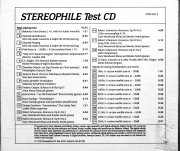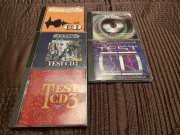NeverSatisfied
Chief Journeyman
Just curious about your experience with room size?That is some kind of NICE. I am sold on the soft start, especially since I've wanted to improve upon the amount of capacitance inside my own D500 way back when I was still listening to it as an essential part of my daily personal decompression chamber. (!)
(OPTIONAL READING)
Although it was fun to show the lights dimming in time to the music during demos, I knew that in order for that to occur the +/- DC rails feeding the output stage were sagging hard enough that this was being reflected back through the full-wave-bridge > output winding of the transformer > input winding > power cord > dedicated AC circuit > other circuit(s) on the circuit breaker panel > circuit with the pulsating lights on it > incandescent bulb filaments?
OK, you may be thinking at this point that I'm tilting at windmills, but thanks to a confluence between the need to sell a house in NH and the radon dudes standing in my way, I have learned the difference between eliminate vs mitigate. (As in "Hey, we are going to scare everyone involved in this transaction silly...and then we're going to tell you that we can't 100% fix the problem...but we can take your money and make it less bad...and you will then be happy -- or something to that effect. (I don't remember exactly, for it was a long time ago & I've blocked it out of my mind. :0)
...but I digress. My previous best decompression chamber involved a single D500 & 2 speakers, and everything seemed to be a pretty good match -- the lights would be dimming in time to the music while both dual-voice coil woofers were pretty close to bottoming out...and this was accomplished with a single pair of 10,000 ufd/120v caps originally installed back in Lynwood, WA back in the late '70s?
So, circling back to the mitigation thing, for literally years I've been wondering how much added capacitance it would take in order for me to reach the physical limitations of my speakers *without* causing the lights to dim? And would this amount fit inside my D500? And would this new added capacitance cause my D500 to start even harder than it already does? (ie: the entire {stock} amp would 'kick buzz/groan' at the start due to inrush current through the transformer -- enough so that I was already concerned about shortening the lifespan of the full-wave bridge?)
NOTE: I've run many different sets of loudspeakers on my D500; mostly friends who wanted to hear if their speakers would sound different on a bigger amp. (A: Yes. Always. Even at the same sound pressure levels they enjoyed with their stock amp -- almost always they would mention something to the effect of 'more ease' as the music went from ebb to flow. And they would leave bittersweet: both happy {that their speakers could sound even better} ...and sad. {because now they now got to walk around with the newfound hunger for more power.} :0) FWIW, I always put them behind the wheel & let *them* run the volume control during these listening tests.)
Anyway, one thing I did notice during these listening sessions was that the lights never dimmed when the other speaker/other owner combo were testing the limits of the D500 <> their speaker setup. And as a matter of fact I never really saw the lights dim when I was originally running the pair of ESS Amt-1b speakers.
So I would reconnect my QLS-1s, and right away the lights were back to flickering in time to the beat of the music. (at demo volume levels.)
YET ANOTHER NOTE: Lest you think that I am some sort of 'Big-Fi' masochist, (see this list, particularly #7 :0) I'm actually just a huge lover of Music, Life Sized, Type 1, each. Actually, I knew my system was really starting to 'gel' when non-audiophile friends/spouses started to hear the difference. And the best compliment I ever got on the system towards the end of the original run was when an non-audiophile person said, "Your stereo doesn't get louder, it just gets bigger."
Exactly my goal.
****
OK, enough of the music blah blah blah. Back to the good stuff: volts/watts/ufd/etc. :0)
Since Glenn has proven in the real world that his pair of 35,000ufd caps + 50A full-wave bridge works, and works well, I'm going to head down his path. And by dedicating 1 amp to each speaker I will get the improved stereo separation by having each amp's power supply only dealing with 'only left' or 'only right' channel info. (Similar to Gepetto's stock vs. dual-mono control boards.) In other words, a potential win for improved imaging/depth of soundstage at low/moderate {ie: normal} listening levels. But at the other extreme, using 2 amps will be of benefit, for now I will now have (twin) 35,000ufd worth of local +/- 120Vdc storage available for each QLS-1.
IMHO, this compares quite favorably with my old setup of both QLS-1s, where both speakers 'shared' a single set of {twin} 10,000ufd caps. Back of the napkin math says that this new approach is ~7x more local DC storage, big picture-wise. Who knows? Maybe I won't be able to eliminate the lights dimming during big musical transients...but I will be able to mitigate it.
Man, just contemplating all this makes me feel like that radon dude, right down to his grinning like a Cheshire cat during that whole radon mexican standoff thing way back when. :0)
As a final thought, Music can actually be Too Loud. (Think mainstream 'music' with little/no dynamic range, VU meters pinned at max, unmoving.)
But it can't be Too punchy, Too much swing, Too emotive, Too exciting, Too involving...or Too Big. :0)
*** (End of OPTIONAL READING section) ***
Nice job, Glenn! I'll have 2, please...with the Soft Start, on the side. :0)
To me big speakers only sound marginally better in a small room than small speakers in a small room. Meaning that to me, if you want big sound (larger not louder), you need large drivers in a large room. When I first got my Betas, I had to set them up in my master bedroom (18d X16w X10h), pretty large room and they sounded very nice. After moving them to main living room (22d X 26w X14h) they sounded even better, not louder but bigger. It is difficult to describe the difference between big sound and loud sound but once you have experienced it, you know it. Obviously there are many other factors, room shape, reflections, hard and soft surfaces, on and on but to get the most out of big speakers you really need a big room IMO.






